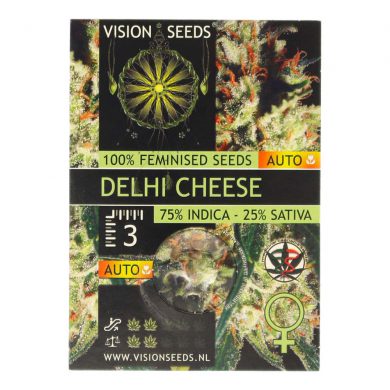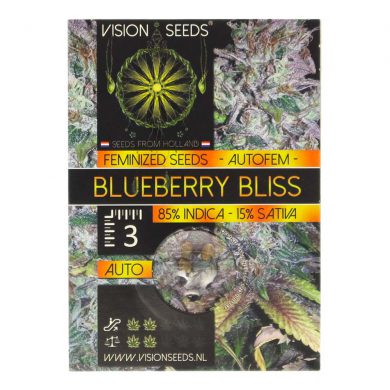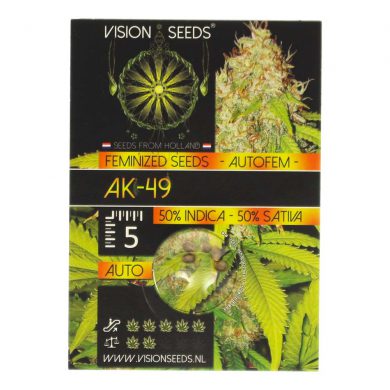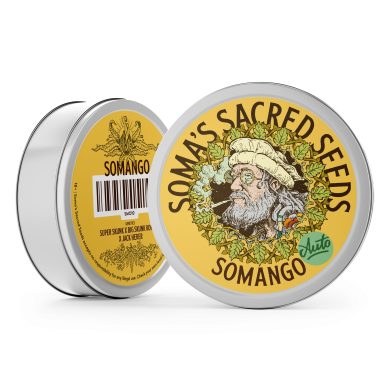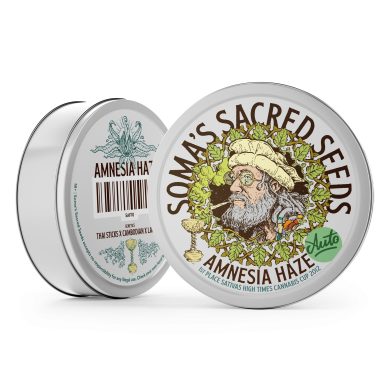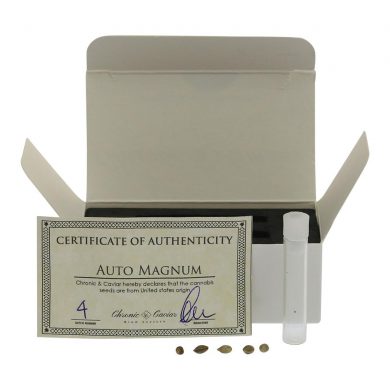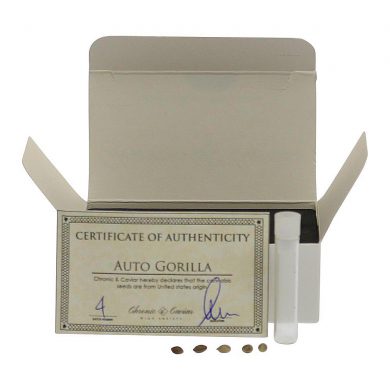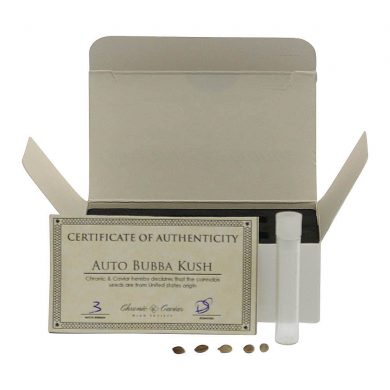- Free shipping above €125,-
- Safe and secure payments.
- Track & Trace your orders.
- Personalized support & advice.
- 9.8/10 customer rating.
Frequently asked questions
What is the difference between cannabis Sativa and cannabis Indica?
The main difference between Indica and Sativa is their easily observable traits, during the cannabis cultivation cycle. Sativa plants grow taller and have thinner leaves, than their sister Indica. Also, Sativas can take longer to fully mature as their flowering phase can be ~100 days, while Indicas have a 45-65 day flowering cycle.
But both of these terms are mostly used in a completely different way – to describe feelings that a certain cannabis plat can give you. Even though, most contemporary cannabis strains are actually hybrids (mix of both).
In short, Sativa-like effects focus on your head effects and Indica-like effects focus on your body-high effects. This roughly translates to some very basic use cases for both of these types of cannabis strains:
Creativity – Sativa
Relaxation – Indica
Thinking – Sativa
Chilling – Indica
Energy – Sativa
Sedation – Indica
High – Sativa
Stoned – Indica
That’s why it is considered that Sativas make for a better daytime smoking experience as they focus on your head effects and allows you to proceed with your daily life (when consumed in responsible amounts), while Indicas are considered to be your afternoon/night-time smoke for complete after-work chill.
With all this being said – cannabis works differently on different people, furthermore – all these effects come directly from cannabinoid and terpene compositions of the plant. So there’s no better way than to just try the strain of your choice, learn how it affects you, and find the best choice for you!
What are cannabinoids?
Cannabinoids are naturally occurring compounds that can be found in cannabis plants. Scientists know at least 113 different substances that can be classified as cannabinoids, most popular of which are THC (Tetrahydrocannabinol) and CBD (Cannabidiol).
What are terpenes?
Cannabis terpenes are another type of chemical compound that can be found in all cannabis plants. Cannabis terpenes are what you actually smell when you notice the odor of any cannabis plant, which means they are somewhat aromatic oils that give cannabis plants it’s distinctive colors and smells.
Not only that but in combination with various cannabinoids, terpenes can promote different effects to its users. There are more than 100 different types of various cannabis terpenes, that provide different traits and profiles for various cannabis strains.
What is THC?
Tetrahydrocannabinol or simply THC is one of the most popular cannabinoids that can be found in cannabis. Let’s be honest here, it is clearly the most popular cannabinoid that can be found in cannabis for a simple reason – this is the cannabinoid that actually makes you high after you smoke cannabis.
It is believed for THC to be the main psychoactive compound found in most cannabis plants.
How does THC work?
Basically, THC binds with your cannabinoid receptors (yes, you have a whole endocannabinoid system in your brain and central nervous system… and yes, you produce various cannabinoids on your own) to produce intoxicating effects, also known as “high”.
What is CBD?
Cannabidiol or simply CBD is a non-intoxicating chemical compound usually found in cannabis plants. It is one of the main cannabinoids that cannabis plants produce and it is actually responsible for the “legalize cannabis hype” happening around the world because CBD is the actual cannabinoid that is believed can help many patients with many various forms of illnesses.
CBD doesn’t get you high, it doesn’t even get you intoxicated – most users report a slightly relaxed, stress-free mood after trying CBD for the first time. It is also believed that CBD can relieve pain, anxiety, insomnia, epileption, and other diseases. Of course, science community is still on its way to prove all of this and to confirm the best user cases, but we know enough to lift bans for medical marijuana (CBD-rich cannabis) in most places around the world.
Sadly, most cannabis strains used for recreational purposes contains very low levels of CBD as, high-THC levels lover the amount of CBD that plant produces. It is believed that this is what old-timer smoking enthusiasts mean when they say “weed is stronger these days” – not only average THC levels in cannabis plants grew exponentially in the past couple of decades (making them way stronger), also CBD levels got low even more.
This is important because CBD softens the effects of THC, furthermore, it is responsible for the calmer and more cozy state of the user when ingested together.
What does "getting high" mean?
Being high in most cases means being intoxicated on cannabis, most likely THC. Term high sometimes can be used to describe intoxication of other drugs, but most of the other drugs have unique terms to describe the effects (example: psychedelics = trip).
What does getting stoned mean?
To be stoned (getting stoned) is another synonym for getting high. But in most cases, stoned and high – can mean somewhat different effects of recreational cannabis intoxication. Being stoned, as the word suggests is usually used to describe the body effects that cannabis can have on its users. This means a relaxed body, inability (or unwillingness) to move from the couch, and overall lazy-laidback feeling that cannabis can give you. In this sense, the term “high” would be more focused oh the head (mind) effects.
Is weed a hallucinogen?
This depends on what kind of cannabis we are talking about and what we are comparing it to. From a purely medical perspective, there are four different drug types – stimulants, depressants, hallucinogens, and opioids. What weed for sure isn’t – cannabis is not an opioid.
With that being said, different cannabis strains can show different levels of stimulant, hallucinogen, and depressant like effects. In some classifications that involve 7 or more different drug types – sometimes cannabis even get’s its own personal classification spot.
To understand why first we need to know what these main 3 drug categories mean:
Depressants – slow down brain and nervous system activity
Stimulants – speed up brain and nervous system activity
Hallucinogens – changes your perception, meaning it changes the way you see, hear, taste, smell or feel things
This means that cannabis can have effects from all 3 of these categories. But if you would need to pick one, well…
Cannabis is mostly a depressant.
This means cannabis can make you feel relaxed, calm, and less inhibited. It also means that it slowers your coordination and concentration. It also means that your reactivity to the environment and overall responsiveness is slower under the influence of cannabis. Which when you think about it, is exactly the expected effects from most Indica dominant cannabis strains.
That’s why if you are looking for more hallucinogenic effects that cannabis can offer, you should look for a Sativa dominant cannabis strain.
What are the effects of marijuana?
Many people get different effects from cannabis use, furthermore different strains are known to produce different general effects. But these are the most common short term cannabis effects:
Euphoria
Relaxation
Heightened or lowered sensory perception
Alertness
Laughter
Altered time perception
Increased appetite
Dry mouth
Anxiety
Paranoia
Increased heart rate
Slow coordination
Pain/anxiety reduction
Muscle relaxation
Sense of well being
Restful sleep
If you read this list carefully, you might be thinking – some of them contradict each other… How come cannabis both increases and decreases anxiety at the same time? Well, it doesn’t. This just means that some people can feel more relaxed after cannabis use, while others can become paranoid from it. It depends on many personal factors as well as the strain/amount of cannabis used.
That’s why it is always important to start slow and stay low, while you are learning about how cannabis or any particular cannabis strain might personally affect you.
Can you get addicted to cannabis?
Yes. Like with every substance or behavior – you can get addicted to weed. This might seem like a contradiction to most addiction information surfacing around the web, so let’s make a couple of things clear before we determine the actual possibility of cannabis addiction.
First, we have to understand that you can get addicted to almost anything, it doesn’t even have to be a drug… You can get addicted to computer games, gambling, sugar, porn, tobacco, and almost any other behavior that you do on a repetitive basis. Habits (don’t matter good or bad) form in our brains in the same way and it can be very difficult to change them after something turned in to a real habit.
Now let’s jump into another part of this question – are we talking about cannabis addiction or cannabis abuse? If we are thinking about physiological cannabis addiction, the answer is simple – it’s almost impossible to have a severe physiological addiction to cannabis.
But, if we are talking about cannabis abuse – well, it’s not only easy to abuse cannabis but cannabis also cannabis can have some nasty long term use effects. If we base this on some up-to-date scientific research, we can say that heavy, long term cannabis users tend to have a lower life satisfaction and greater risk of addiction in general (not only to cannabis). Furthermore, longer “chronic” cannabis users also report a much greater difficulty when it comes to employment.
So to sum up – there is no such thing as a bad substance. There are just bad or good relationships we can have with those substances.
What is the best way to smoke cannabis?
Vaping it. Probably. This notion comes from the fact that when vaping cannabis you are inhaling vapor, not smoke, thus most of the unhealthy stuff theoretically doesn’t reach your lungs. Also, when vaping cannabis you don’t add tobacco (like you do with joints or blunts to help weed burn), you also don’t inhale propane from lighters and paper-glue from the papers you used to roll it.
With all that being said, vaporizing cannabis is a really expensive investment as a decent herb vaporizer can cost you at least ~100eur/dollars and better ones can easily require at least a couple hundred to get this party going.
The second best way to some cannabis is probably a bong, also known as a water pipe. Especially if it’s an ice-water bong (meaning there is ice inside the bong, to cool your smoke down). The main principle behind a water-pipe bong is simple – filtrate and cool down the smoke with water/ice. This way you are again, smoking cannabis without added tobacco – which is better, but you are inhaling actual smoke and not everybody likes “the instant kick” that bongs give you.
The easiest and most popular method of cannabis use is smoking a joint (or blunt). This means grinding your weed with a herb grinder, mixing it with a little bit of tobacco (this helps the joint to burn better), and rolling it in a special rolling paper (blunts are usually rolled with pure cannabis because blunt itself is made from tobacco).
After we named, the most popular methods (if we consider weed pipes, to be in a similar stage as bongs, just without water filtration) – there are numerous ways you can mix’n’match these basic principles to make unique smoking experiences.
We are talking, gas-mask cannabis smoking, smoking weed true an apple, making a gravity bong, making a pipe from a soda can, using a one-hitter, rolling a cross joint, put it in a hookah or even just – hot box it. If you didn’t know what any of these means, feel free to look them up – we intentionally took all the more dangerous and bizarre ways to smoke cannabis from this little list.
